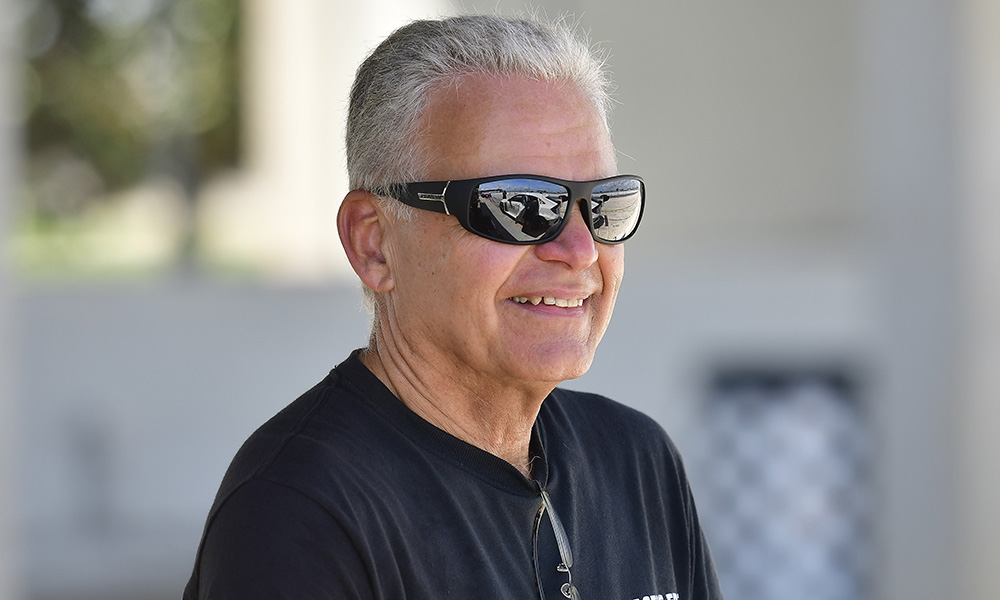Confirmed: Next-Gen Nissan GT-R Will Be a Hybrid, Arriving in 3-5 Years
The Nissan Americas boss exclusively tells The Drive that an all-electric Nissan GT-R can't deliver the performance it needs as a flagship sports car. The post Confirmed: Next-Gen Nissan GT-R Will Be a Hybrid, Arriving in 3-5 Years appeared first on The Drive.

On Wednesday, at the 2025 New York Auto Show, Senior Vice President and Chief Planning Officer for Nissan North America, Ponz Pandikuthira, exclusively told The Drive about the R36 GT-R. But this time, the executive provided a timeline, dove into revised powertrain plans for the next-gen supercar, and talked about project requirements. It’s been decided that the next GT-R will be a hybrid after all, rather than a pure battery-electric sports car, and we should see it by the end of this decade.
Shifting from electric to electrified
In April 2024, Pandikuthira confirmed the GT-R nameplate wouldn’t die despite the R35 nearing the end of its lifecycle and production wrapping up.
At the time, Pandikuthira said a powertrain for the next-gen GT-R wasn’t locked in yet, but added that Formula E, an electric racing series, is a test-bed for the supercar.
In July 2024, Nissan’s now CEO Ivan Espinosa told Top Gear that with electric vehicles, “the acceleration out of a corner is far quicker than combustion-engined cars, and the level of control is much higher.” Espinosa followed the statement, noting that “with a GT-R this could be a good thing since it’s a car that’s easy to drive on a track because of the systems it has, and you can deliver that same experience with an EV.”
The world has changed in a year, and so have plans that seemed to have been telegraphed about the next-gen GT-R. Godzilla won’t be electric, but it will be a hybrid.

Pandikuthira said Nissan built some electric prototypes for the next-gen GT-R, but “basically it’s like it would complete one lap at the Nürburgring, and then you have to recharge the car. And then that charging is going to take you a while, and it’s just not authentic.”
“You just built a thing to check that box that you have a GT-R, but it’s not really a GT-R,” Pandikuthira said. “No, electric, I don’t think you’ll deliver with the technology that we have now, or even with solid state, the kind of performance that’s expected out of a GT-R.”
Pandikuthira reiterated, as he has in the past, that a GT-R has performance targets that are required to make it authentic. Those objectives include being able to set lap records at the Nürburgring (the exec made sure to mention how the R35 GT-R once bested the Porsche 911) and lap the legendary track multiple times at speed. “Hybrid technology, EV battery technology is not there yet to deliver that kind of supercar,” the VP said.
“Even if it’s all solid state (referring to next-gen battery technology Nissan has in prototype production), you’re not going to deliver the kind of performance expected out of a GT-R,” Pandikuthira said, referring to an electric version of the icon.
Pandikuthira elaborated on the upcoming next-gen battery technology, noting that “it might be alright for other electric cars that you could do that are the cruising around need to be seen at a country club, but the ultimate raw performance GT-R as an electric car, that’s really quite a ways away.”

Hybrid or plug-in hybrid GT-R? Still TBD, but ideally plug-in
“We are going to have a certain level of electrification there,” Pandikuthira said. The executive said, “solid-state batteries will be the key enabler to make that happen.”
The reason is heat management and energy density.
Pandikuthira made cases for the next GT-R being either a hybrid or a plug-in hybrid. The decision isn’t locked due to the unknowns with tomorrow’s battery tech, but he likes the idea of a plug-in hybrid. With today’s tech, though, a conventional hybrid makes more sense on a track.
“Think about a plug-in hybrid (with today’s technology) and you do two or three laps of the Nürburgring and you’re running out of juice. Then that car is not really working (at full power),” Pandikuthira said. The VP added that a plug-in hybrid necessitates a lot of additional weight, due to its larger battery pack.

Which kind of hybrid the GT-R ends up being will be determined by what kind of performance solid-state batteries deliver in reality, according to Pandikuthira.
“We know thermal management is going to be really good (with solid-state batteries),” Pandikuthira said.
“If I was given an ideal, I’d like a GT-R that I could drive for say 70 miles or so on all-electric range, putzing around town,” Pandikuthira said. The executive noted this would be his architectural wish list, because it would mean the GT-R could be driven on pure electricity.
“The whole point of the GT-R is [that] this isn’t a car that you drive only on special occasions. You want to drive your kids to school, you go to the grocery store, whatever your local driving, you actually got an EV,” the VP said. Then the car could tackle hot laps at a race track, theoretically, with tomorrow’s solid-state batteries.
Pandikuthira noted that a battery for a car like that with solid-state technology would only need to be “maybe 30 kWh.”

The R36 GT-R will have a turbo gas engine, over 600 hp
“That allows me then to give a fire-breathing V6 twin-turbo ICE component,” Pandikuthira said, noting a plug-in hybrid would offset the gas engine thanks to the majority of a day-to-day drive cycle being performed in an EV low-emissions mode.
“So will it be turbocharged? Absolutely, yes,” Pandikuthira said.
Every production car to wear the GT-R badge in history has had six cylinders under the hood to date.
Pandikuthira noted that the twin-turbo V6 in the new 2025 Armada is built to handle emissions all the way to 2032. “It is a very clean-burning engine for what it is,” the executive said. That twin-turbo V6 under the hood of the latest Armada has a GT-R-like scavenger oil pump.
A GT-R should be able to be driven any time, anywhere, any place, even in the snow, no problem whatsoever, according to Pandikuthira.

When will the R36 Nissan GT-R arrive?
“If I had to put a timeline out there, next three to five years for the new GT-R,” Pandikuthira said.
The timeline for the R36 GT-R aligns with Nissan’s plans for solid-state battery production, which has been shifted to about 2028.
In 2022, Nissan unveiled a pilot production facility for solid-state battery cells at the automaker’s Research Center in Japan’s Kanagawa Prefecture. Prototype batteries are imminent.
Godzilla will roar again, and when it does, it’ll be faster, more efficient, and at times, quieter—but still turbocharged.
Got tips? Send ’em to tips@thedrive.com
The post Confirmed: Next-Gen Nissan GT-R Will Be a Hybrid, Arriving in 3-5 Years appeared first on The Drive.










































































